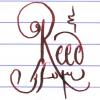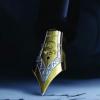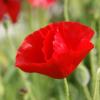Search the Community
Showing results for tags 'dark forest'.
-
Diamine Dark Forest Many thanks @Lithium466 for the sample. 🙏 This is a dependable dark green/ teal, part of Diamine's 150th anniversary inks It’s a very well-behaved dark green, especially with a Japanese Ef nib, which was quite pleasant. From M onwards the colour changes from a dark green to a dark teal (shading appears also from M nibs onwards, despite what the scan wants you to believe. And it doesn’t like copy paper. It's a great ink to do washes, surprisingly creating a teal effect, even though I don't see any blue in the chroma: Writing Samples: My apologies for the misspelling. I must have been thinking of another Forrest I couldn’t fill the Nib creaper, so it is not a real representative of a flex nib, and finally I stumbled on my Tomoe River notebook (don’t ask) hence the major smudging, which I believe shows the range of the ink Photo: Comparison: Water test: and finally an art work. As you saw with the quotes, the name of the ink, conjured the Enchanted Wood, by Enid Blyton. This is a rendition of the Magic Farway tree, by my child's mind. Noodler's Polar Brown Sailor Kiwa-guro Octopus White Polar Bear J Herbin Éclat de Saphir · Pens used: Pilot Kakuno Ef, Lamy (EF/F/M/B, BB, 1.1), Nib creaper dipped · What I liked: Writing with M/ B nibs. Doing washes. · What I did not like: Nothing much. · What some might not like: If you use copy paper, it’s not for you. · Shading: M nibs onwards. · Ghosting: Yes, on cheap paper. · Bleed through: Yes, on cheap paper. · Flow Rate: Nice and wet. · Lubrication: Generous. · Nib Dry-out: Did not notice. · Start-up: I had some difficulties when switching nibs. · Saturation: Nice and dark. · Shading Potential: M /B nibs. · Sheen: Did not notice. · Spread / Feathering / Woolly Line: Did not notice. · Nib Creep / “Crud”: Did not notice. · Staining (pen): No. · Clogging: Did not notice. · Cleaning: Easy · Water resistance: Inexistant. · Availability: 40 ml bottles / Cartridges Please don't hesitate to share your experience, writing samples or any other comments. The more the merrier
-
I've recently purchased a bottle of Diamine Dark Forest, which I was hoping would be more of a fir-tree green, but is, in fact, close to olive. What blue ink (presumably Diamine) should I blend with it to create a more beautiful, less olive, color? Thanks! Gary
- 6 replies
-
- diamine
- dark forest
-
(and 1 more)
Tagged with:
-
Diamine Dark Forest (150th Anniversary II) The ink maker from Liverpool is one of the staple brands in ink-land. They consistently produce solid inks for a very reasonable price. In 2017, Diamine released their second ink series to commemorate their 150th Anniversary. I obtained my set shortly thereafter, but more or less forgot about them when my attention drifted to Japanese inks. About time to do the reviews. Fortunately, these anniversary inks are still easily obtainable, so if you like what you see you can still get them. Diamine Dark Forest is another lovely ink in this Anniversary series. A dark & saturated green with strong blue undertones. My first reaction when seeing the ink was “definitely a dark green”. And then I got like “hmm… maybe a dark teal… lots of blue in there”. And after preparing the review material, I got to “well… not a teal yet, but going there.” I love it when inks leave the well-trodden path, and meander between the colour lines. More often then not they gain in complexity and beauty. Dark Forest is no exception – I find it to be a very interesting ink with lots of depth. This Diamine ink is very saturated and lays down a dark blue-green line when writing. With a wet-writing pen, the colour can almost turn black. Where the ink gets overly saturated, you can often glimpse a reddish sheen. I like it that the ink looks totally different, depending on the wetness of the nib/pen combination. Teal-leaning in drier pens, and going dark green to green-black in wetter pens. To illustrate the colour span of this Diamine ink, I did a swab on 52 gsm Tomoe River paper, where I really saturated portions of the paper with ink. Dark Forest has a broad colour span, with a substantial difference between the light and darker parts. This translates to strong (even harsh) shading when writing. Shading is present in all nib sizes, even the finer ones. Personally, my preferences go to soft & muted inks, and this Dark Forest is quite the opposite. But still, I like the complexity of its character. On the smudge test – rubbing text with a moist Q-tip cotton swab – the ink behaved badly. Tons of smudges, although the text itself remains very readable. Water resistance is almost zero in practice – from the bottom part of the chromatography, I had expected a better result. But no, this ink is very prone to watery accidents. This makes it - for me at least - unsuited for use in the workplace. I’ve tested the ink on a wide variety of paper – from crappy Moleskine to high-end Tomoe River. On each scrap of paper I show you: An ink swab, made with a cotton Q-tip 1-2-3 pass swab, to show increasing saturation An ink scribble made with a Lamy Safari M-nib fountain pen The name of the paper used, written with a Lamy Safari B-nib A small text sample, written with the Lamy Safari M-nib Source of the quote, written with my Yard-o-Led Viceroy Standard with F-nib Drying times of the ink on the paper (with the M-nib Safari) The multi-paper writing test shows that Dark Forest can cope with a wide range of papers. With the lower-quality papers (Moleskine, copy paper) there is just a tiny bit of feathering, and a small amount of bleed-through. Drying times are in the 10-15 second range on harder paper, and around 5 seconds on the more absorbent low-quality papers (with the Lamy Safari M-nib). This dark blue-leaning green works well with both white and creamy paper. Because scans don't always capture an ink's colour and contrast with good precision, I also add a few photos to give you an alternative look on this Diamine ink. In this case, the real colour seems to sit a bit between the two. Writing with different nib sizes The picture below shows the effect of nib sizes on the writing (written on Rhodia N°16 80 gsm paper). All samples were written with a Lamy Safari. I also added a couple of visiting pens: a wet-writing Yard-o-Led Viceroy Standard Victorian, and a Pelikan M120 (which writes quite dry for a Pelikan). As you can see, the ink can look quite different depending on nib/pen combination – almost a teal in the 1.9 calligraphy nib, almost black in the Yard-o-Led. But in all cases quite saturated and with heavy shading. Related inks To compare Diamine Dark Forest with related inks, I use my nine-grid format with the currently reviewed ink at the center. This format shows the name of related inks, a saturation sample, a 1-2-3 swab and a water resistance test – all in a very compact format. The ink that comes closest in comparison is the 2017 LE ink Lamy Petrol, which has just a touch more blue. With Lamy Petrol being unobtanium these days, this Dark Forest could be the replacement you were looking for. Inkxperiment – excalibur With each review, I try to create an interesting drawing using only the ink I’m reviewing. This is often quite challenging, but it has the advantage of showing the ink’s colour range in a more artistic setting. I enjoy doing these little drawings immensely – it’s quite a fun extension of the ink hobby. Always good for a fun couple of hours. For this inkxperiment, I had zero inspiration. So I started with word associations to get me going: English ink, dark forest… medieval woods… runes and druids… Avalon… King Arthur… Excalibur. OK - good enough to get the drawing started... I used an A4 piece of HP photo paper, that I covered with a paper towel on which I dripped water-diluted ink to create the textured background. Next I used pure Dark Forest to paint in some darker patches for the stone & sword, and as a background for the runes. With the side of a piece of cardboard dipped in ink, I added the branches of the medieval forest. Finally, I used cotton Q-tips with bleach to draw in the runes and Excalibur. The result is not a masterpiece, but it gives you an idea of what can be achieved with this Diamine ink in a more artistic context. Conclusion Diamine Dark Forest is a saturated blue-leaning dark green that can look substantially different depending on your nib/pen combination – it can span the whole range from green-leaning teal to dark green black. A heavy shader that shows a bit of a reddish sheen in heavily saturated areas. For me personally, this Dark Forest is a bit too dark & harsh, but it’s certainly a complex and interesting ink. I enjoyed playing around with it. Technical test results on Rhodia N° 16 notepad paper, written with Lamy Safari, M-nib Backside of writing samples on different paper types
- 13 replies
-
- diamine
- 150 anniversary ii
-
(and 3 more)
Tagged with:
-
Hello Friends, I (as well as other reviewers) have had the go ahead from Diamine to share the following ahead of the release of the latest range of inks from the 150th Anniversary later this month. All incredibly well behaved and have amazing shading! I will be adding fuller reviews in due course, however, the overview is as follows: Colours being released include: Burgundy Royale - I LOVE this colour and I was delightfully transported to the early 1990's when I had a very similar shade from the WHS Smith Messenger range (which I have been searching for every since!!) How delighted I was to find that Diamine produced it for said stationers!! This is a rich, wet ink that has been a joy to write with. Despite being rich and dark, it shades! Golden Honey - fabulous with punchy shading. I love the deep orange where the ink pools. The flow is smooth and perfect from my Konrad. This is a well behaved twin of Apache and I am very happy indeed. Blood orange - gorgeous colour, very well behaved, shades beautifully, vibrant yet not tiring, it is in my perpetual rotation! Dark Forest - colour is very beautiful and elegant, I was very excited to write with it briefly, again reminded of KWZI I. G. green which I have been using daily for weeks. Very well behaved, rich, luxurious green with a silky smooth flow. This ink sheens red!! Lilac Night - surprising rich colour, well behaved, good flow. Reminded of Diamine Damson in its duskiness, which I love. Not sure about the Lilac name, which often elicits images of soft, summery, ladies who lunch kind of lilac, or heroines gracing the cover of Georgette Heyer novels Vs the luxuriously rich ink i am writing with. But that is just my very subjective thought. Tudor Blue - love the name, it is Diamine! Ink has confused me somewhat, it is very 'normal', standard, washable blue. The shading is great, it is slightly on the dry side and I am really reminded of Quink. Purple Dream - lovely colour, great flow, behaviour and shading. Am enjoying using this ink very much, it is fresh and 'now', but equally, it is olde worlde and regal! Espresso, a beautiful brown, has felt slightly on the dry side, pen has needed encouraging a few times before it will write after being left capped for a day or so. Otherwise a great colour with great shading. Here is a swatch:
- 46 replies
-
- diamine tudor blue
- blood orange
-
(and 2 more)
Tagged with:




